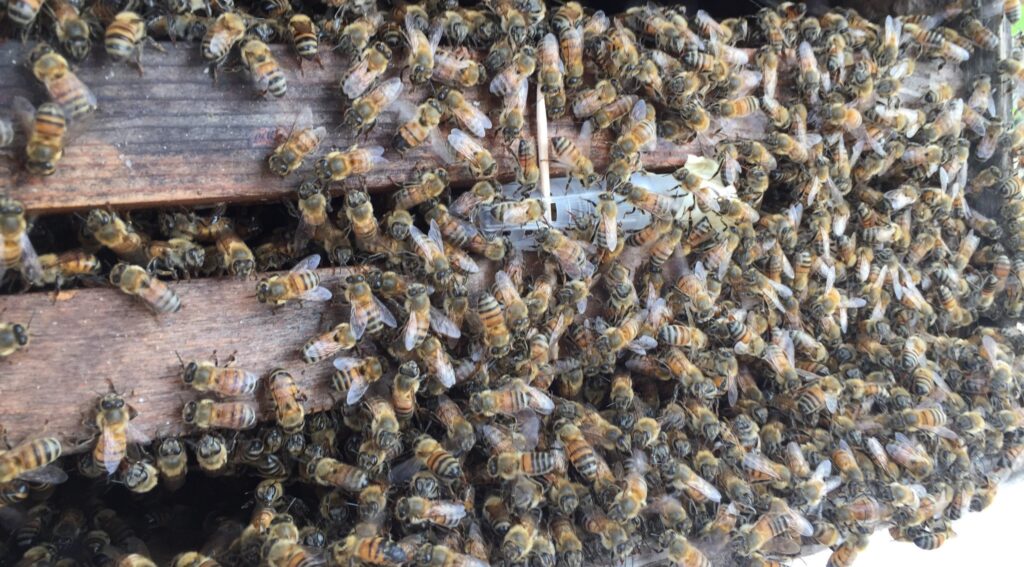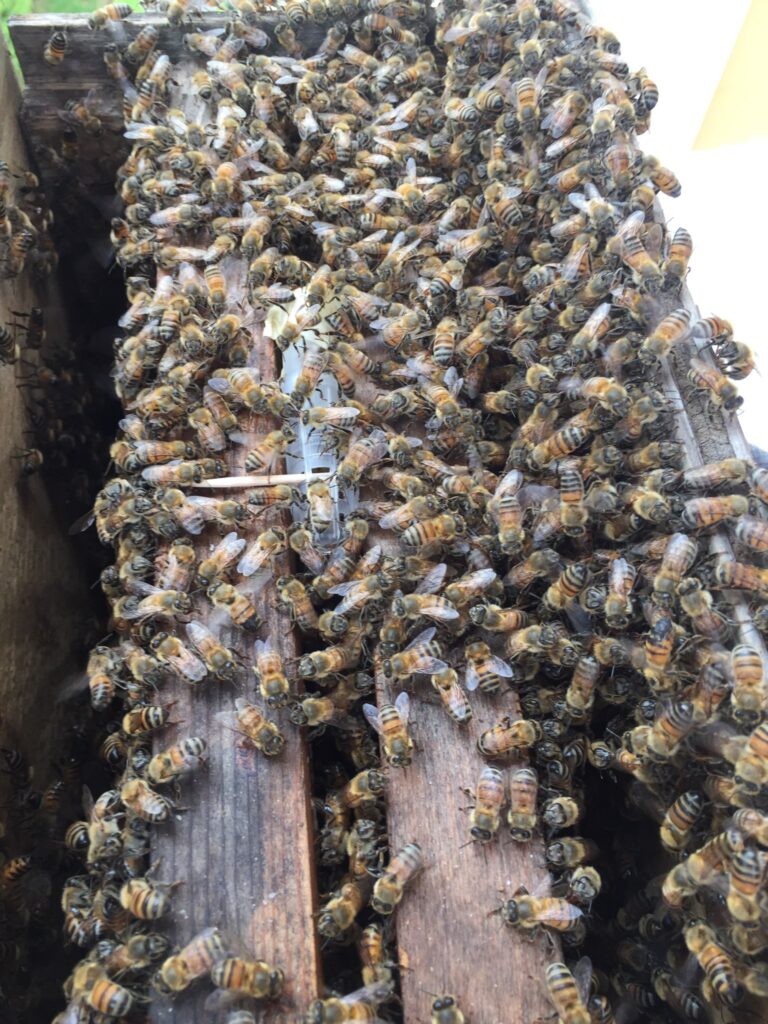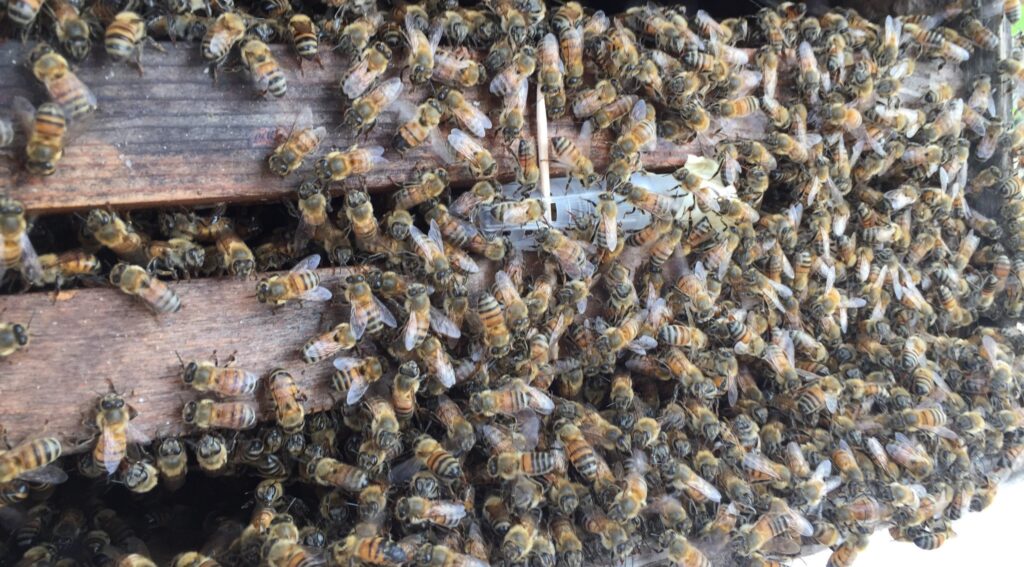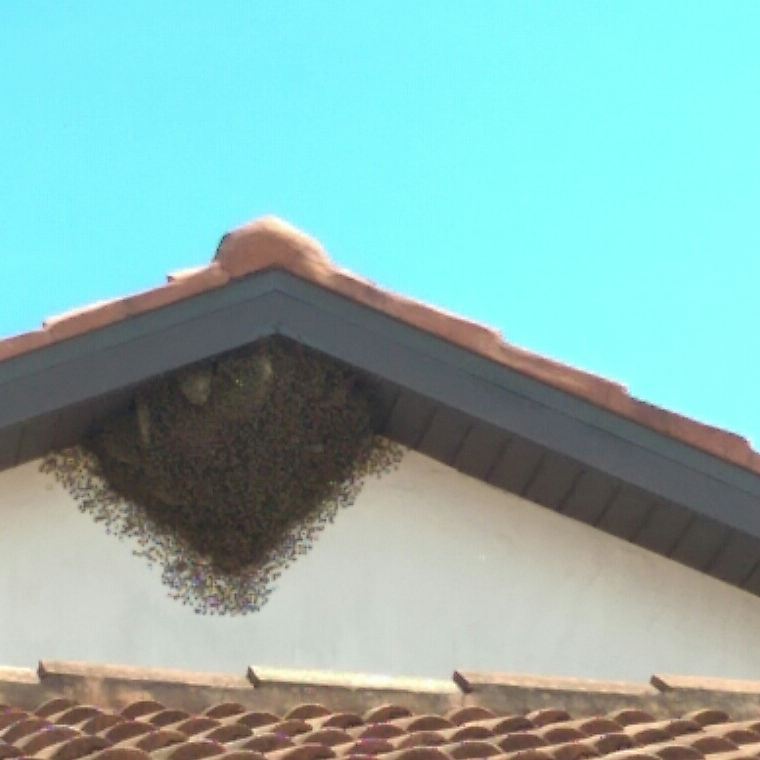
Honey Bee: (Apis)
Honey bee, though it’s a little more accurate to say “Western honey bee,” because there are several species of honey bee that are native to Asia but are absent in the U.S.
Apis mellifera. There are at least 20 recognized “species” of Western honey bee, each associated with a particular geographic region, and all of them so closely related that they can interbreed and produce viable offspring. Because these bee-species distinctions are important to beekeepers, scientists have adopted the practice of adding a third term to the scientific names of some Western honey bees, to indicate their geographic origins.
It’s believed that the first honey bee colonies brought to the U.S. in the early 1600s contained the honey bee species known as Apis mellifera mellifera, which comes from Northern Europe and is sometimes known as the “European dark bee.” The typical honey bee found in the U.S. today represents a hybrid of several European strains, including Apis mellifera mellifera, Apis mellifera ligustica (from Italy,) Apis mellifera carnica (from the Austrian Alps,) Apis mellifera caucasia (from the Caucasus Mountains) and Apis mellifera iberiensis (from Spain).
Honey bees are everywhere. Florida is home to over 300 species of bees.
Honey bees have short, thick bodies covered with hair and, six legs and three body parts: head, thorax, and abdomen. The thorax in turn has three segments, each with a pair of legs. A tiny waist connects the thorax and abdomen.
Ordinarily, most bees fly about 12 1/2 miles (20 kilometers) per hour, but they can fly much faster. They have two pairs of wings. One pair is attached to each of the last two segments of the thorax, but front and back wings are joined so that they may look like only one. The rapid movements of the wings make a humming sound in flight.
With three single eyes on top of their heads and two huge, helmetlike compound eyes, bees can see color, pattern, and movement. The many facets of their compound eyes give them a total image in a mosaic of dots. Bees see all colors humans do except red, and they see ultraviolet, which humans cannot. Ultraviolet is often reflected by red flowers. Bees can also detect the polarization of light, which humans cannot. For example, in a blue sky polarized light forms a distinctive pattern around the Sun, and even when the Sun is behind the clouds bees can perceive that pattern and orient themselves to it.
Honey Bee break down into one of three categories: worker bee, drone, or queen Bee. Unlike wasps, Honey Bees create hives out of wax (not a paper-like substance) and only swarm when they are reproducing. Swarms occur when the old queen leaves with a portion of the hive while those that stay behind work with a new queen recently born inside the hive. A female larva can be fed a special diet by the worker bees, which will make her a fertile queen. Other female larvae are given a regular diet that renders them infertile.
Worker bees are these sterile females and they measure between 9 and 18mm long while a queen bee can be 18 to 20mm in length. Male drones lack stingers and reside in the hive until reproduction is complete. They are then killed by the worker bees and removed from the hive.
Worker bees feature a nearly all-black head with a body coloring of golden brown and black with dull orange patches. Yellow bands are very visible on the abdomen and the wings are clear. The entire body is covered in tiny hairs with a dense amount sitting both on the head and the body.
Honey bees are not native to Florida all species of the Western honey bee are native to Western Europe, the Middle East, and the African continent, particularly its east coast. There are no honey bees native to North America in the present day, although scientists have identified an extinct prehistoric species.
Nonetheless, many Americans probably believe that the honey bee is a native insect – it’s an understandable belief, considering how long the honey bee has been present in the U.S., how visible individual honey bees are in many environments, and the fact that the U.S. is home to feral honey bees, presumably the result of domesticated bees swarming and establishing new colonies in natural areas.
Honey bees and bees in general are very beneficial to humans and critical to our environment. We must protect our bees, we simply need bees.
As they collect nectar for their hives, bees travel from plant to plant spreading pollen that collects on their furry legs and bodies. Aside from the many benefits of having bees in your garden, bees pollinate a shocking 85 percent of food crops intended for human consumption.
Bee stings are painful (and dangerous to people with allergies), they pose a minimal threat to our daily lives. They only sting when feeling threatened such as when protecting their hives, or when swatted.
Try to avoid a bee sting:
![]() Wear shoes while outside, never go outside barefoot
Wear shoes while outside, never go outside barefoot
![]() Don’t touch live bee hives, throw rocks or try to knock them down in anyway
Don’t touch live bee hives, throw rocks or try to knock them down in anyway
![]() Be aware of your surroundings, check playsets, picnic tables, grills, anything outdoors bees can build nests
Be aware of your surroundings, check playsets, picnic tables, grills, anything outdoors bees can build nests
Their stingers are barbed, making them difficult to remove, but even worse to leave in, as they will release additional venom and cause more pain over time. If you do get stung, remove the stinger immediately with tweezers or by scraping your fingernail over it to loosen the stinger.


